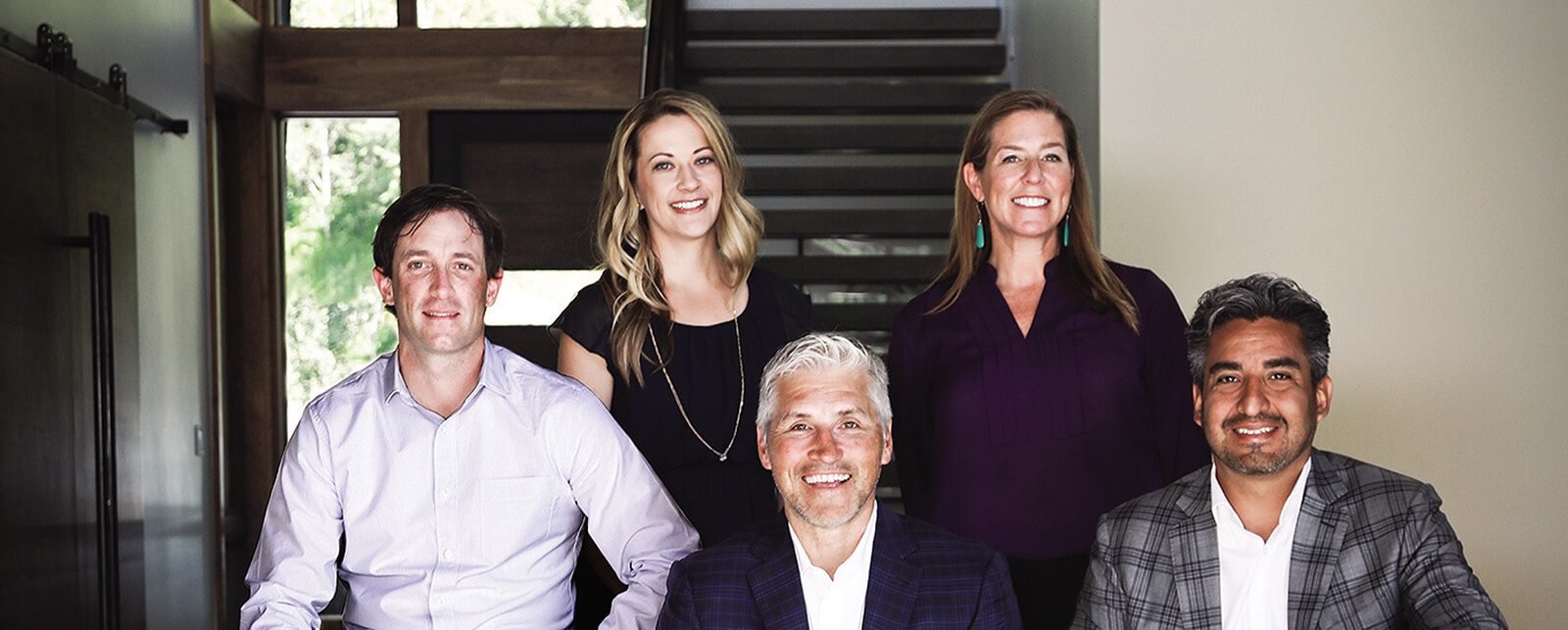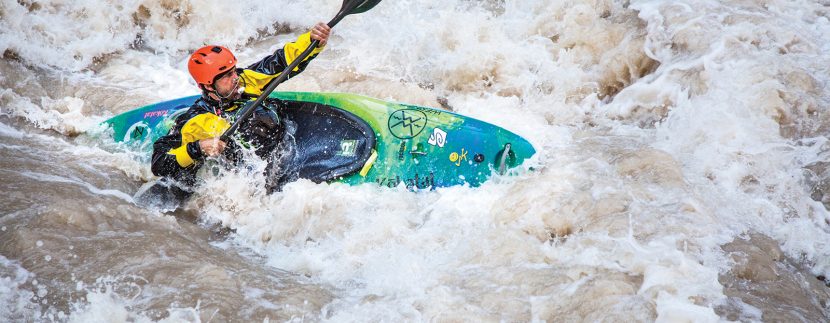by Brittanny Havard
Climbing Mount Everest is a summit few can say they have reached, and one fewer still have reached as a blind person. Today, I am interviewing, Erik Weihenmayer, the 48-year-old pro-adventurer best known as the only blind person to climb Mount Everest. On the descent from Everest, the 29,029-foot peak looming safely behind, Weihenmayer’s trip’s expedition leader slapped him on the back and told him, “Don’t make this the greatest thing you’ll ever do,” and since that moment, Weihenmayer has been reaching heights most individuals can only dream of in response to that challenge.
I am here to interview Weihenmayer about his recently published a book, No Barriers: A Blind Man’s Journey to Kayak the Grand Canyon, the moving story of Weihenmayer’s journey since descending Mount Everest, and the events that led to his most recent adventure, a solo kayaking trip down the entirety of the 277-mile, thunderous waters of the Grand Canyon.
In addition to climbing Everest, Weihenmayer has summited the Seven Summits, (the highest mountain in every continent in the world), scaled the 3,000- foot rock face of Yosemite’s El Capitan, along with the 2,000-foot frozen Himalayan waterfall, Losar. He also solo skydives, paraglides and skis in the backcountry of his home state of Colorado.
For most, Mt. Everest, or any of the massive adventure-milestones Weihenmayer has triumphed, are once-in-a-lifetime experiences few conquer. But as I learn soon after diving into plates of Lebanese delicacies at Ali Baba’s, a renowned Mediterranean restaurant in Golden, Colorado, where the adventurer calls home, Weihenmayer’s experiences have little to do with conquering mountains or rivers at all.
As Weihenmayer enters the restaurant, he seamlessly navigates around other diners, and I smile at my nervousness that he would not be able to find me at our table (the man climbed Mt. Everest after all). Over six feet tall, with an athletic build and shaggy brown hair, Weihenmayer fits the bill as your average Golden, Colorado resident, both outdoorsy and laid-back, but as we begin our interview, I realize quickly there is nothing average about Weihenmayer.
“Climbing Mt. Everest is an example of one of these pivotal moments in your life that can be the type of experience you look back on and say ‘once upon a time,’ and leave it at that, or, use as a springboard to do greater things and to keep challenging yourself,” said Weihenmayer.
Along with a team of ten, including blind veteran, Lonnie Bedwell, Weihenmayer embarked on a 21-day kayaking trip down the Grand Canyon in 2014, which is famous for its 12-foot waves, relentless boat-flipping eddies and fierce rapids. All of Weihenmayer’s adventures post Mount Everest, leading up to his most harrowing reach of them all, solo kayaking the Grand Canyon, are the response to his aforementioned Everest expedition leader’s challenge.
The lessons Weihenmayer learned on his journey down the Grand Canyon differed greatly from those learned climbing mountain peaks—even with heights as far reaching as Mount Everest. “It’s a great lesson for us as humans to figure out what we have the power to influence and what we must let go,” said Weihenmayer. “Imagine you are coming down the mountain in a terrible storm. Your pack is crushing your organs, your fingers and toes are numb, your water bottle is frozen, the wind is whipping your face and you think you are getting frostbite on your ears, but do you panic? No. Because that means you die out there in the snow. You take that uncontrollable situation and you bring it under control. In kayaking, you can’t take breaks and you can’t slow down. With kayaking, you’re making moves, but you’re fighting forces that are ultimately so much greater than you are. It’s about letting go as opposed to taking control.”
Since his descent from Everest, Weihenmayer has been learning to take charge of situations he can control and to let go of those he cannot, a line of thinking that was the inspiration for his new book and his foundation, No Barriers, an organization that helps those that have suffered from mental and physical injuries to know that although there exist plenty of barriers in our lives, there are ways to navigate these barriers, and overcome them.
“Kayaking the Grand Canyon is a great metaphor for the book and for life,” said Weihenmayer. “In kayaking and boating, you call it the line. If you follow the line your chances of coming through the rapid intact are much greater. But often—when you fall off the line, you learn more than if you had a straight run.”
For the blind, patterns are instrumental in navigation, and I ask Weihenmayer how he excels in nature where surroundings are seemingly patternless. With two guides helping Weihenmayer navigate the river using a bluetooth radio system to call out turns, he was able to make sense of nature and find a pattern to assist him in navigating his course.
“If you didn’t know any better, you’d think you were going into chaos,” said Weihenmayer. “But rapids have a map. If you’re discerning—you can discover that map.”
For Weihenmayer, it is not the surface of the river that is most significant, but what comes from its depths. “What you learn through kayaking is that you are riding the energy on the surface of these rapids. You are experiencing what you think is the full picture—but it is the boulders, the branches and stones that are creating all this energy from way down in the depths of the river. The book is about understanding the things that motivate us: our fears, anxieties, self-doubt. So much of our experience affects us from beneath the surface. That’s what No Barriers is.”
Before No Barriers, Weihenmayer authored two books: Touch the Top of the World: A Blind Man’s Journey to Climb Farther than the Eye Can See, and, The Adversity Advantage: Turning Everyday Struggles into Everyday Greatness. “The books I wrote in my early 30’s were about tools and ideas for using adversity in your life to your advantage,” said Weihenmayer. “In your 40’s, you realize the rules you were trying to build up in your 30’s are too neat. Nothing is wrapped up in a bow.” This realization led Weihenmayer to pen No Barriers.
No Barriers—the book and the organization, is not about outlining the tips to success when it comes to adversity, rather like the powerful rapids of the Grand Canyon, with its changing currents influenced by the invisible mysteries from the depths below, No Barriers is an exploration of the heart and mind at the core of the oftentimes turbulent human experience.
In No Barriers, Weihenmayer demonstrates that he is just navigating life’s ups and downs along with the rest of us. “You learn from the flailings and beatings—not from the neat, perfect experiences in your life.” I ask Weihenmayer if he has days when he wishes life was just easier. He pointed out to me what looked like a deep wrinkle on his forehead and explained that, while most think it is a wrinkle, it is really a scar. “I had just stepped out of the airport at O’Hare and was jostled by someone darting for a taxi. I smacked my head into a low overhang and my suit jacket went flying into a puddle of dirty, oily slush, my backpack was open and all of its contents flew out, and I’m lying there on my back with blood pouring into my eyes. That’s the experience that I think about when asked if I ever wish the day to day was just easier. “That, or when I eat nachos,” he says with a smile.









